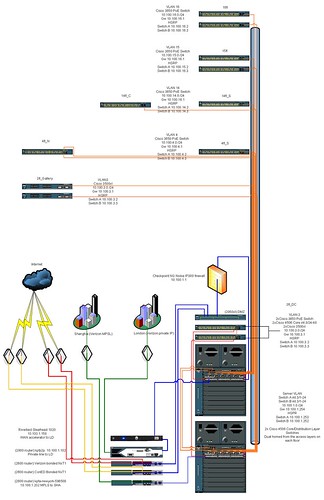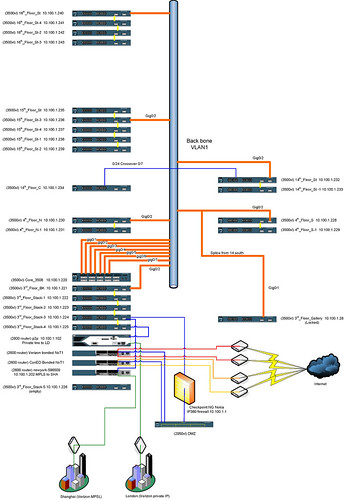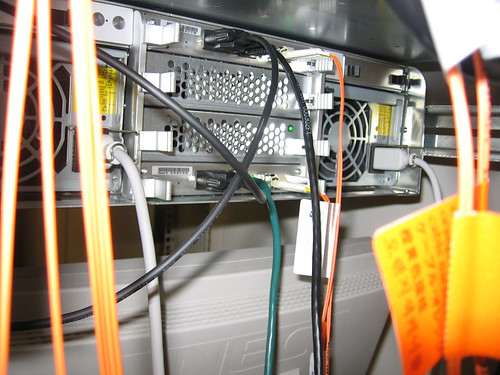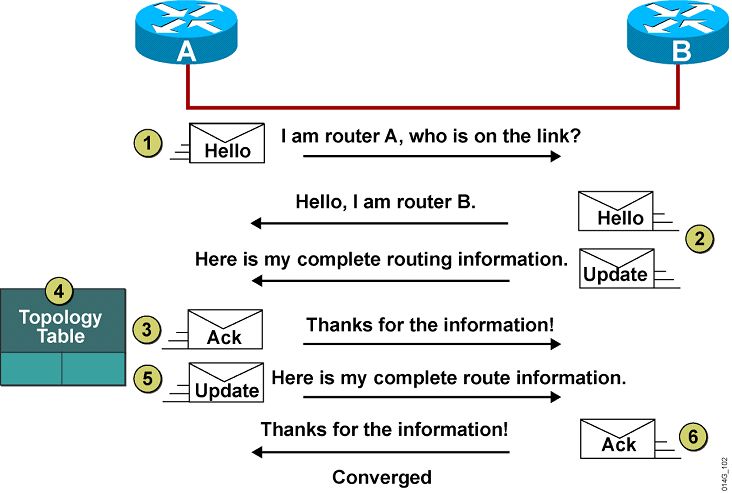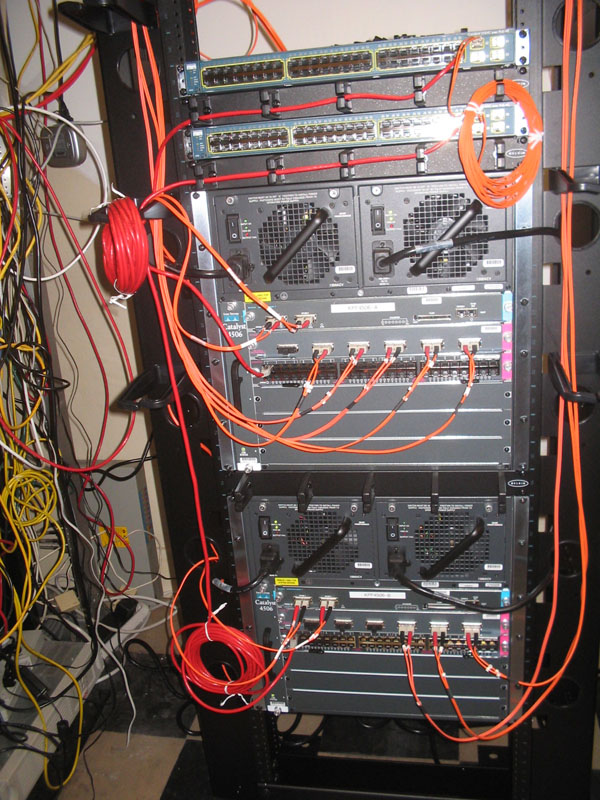When we decided to go with a SAN over a year ago we made that decision based on these criteria;
-centralized storage
-redundancy
-easy to manage (if you know what you are doing)
-scalability
-Dell/emc maintenance and support (very good in this area)
-performance
-versatility
We are a Microsoft Windows shop so it was a very easy integration. It took a day to set up and get all the servers configured. Each server needed 2 Host Bus Adapters (HBA), drivers, SANsurfers and emc Powerpath. These are for connectivity management and licensing.
Once the SAN itself was unboxed, racked and firmware was updated it was time to carve it up. Originally we only have the CX300 itself and 1 disk array Enclosure (DAE) we added a second one a few months later. I have a pic of how the LUNs carved up look in paper.

**What are LUNs?
In computer storage, a logical unit number or LUN is an address for an individual disk drive and by extension, the disk device itself. The term originated in the SCSI protocol as a way of differentiating individual disk drives within a common SCSI target device like a disk array.
The term has become common in storage area networks (SAN) and other enterprise storage fields. Today, LUNs are normally not entire disk drives but rather virtual partitions (or volumes) of a RAID set.(wikipedia definition)**
After the carving we were ready to connect the server to the SAN via McData Fiber Channel switches. Here we had to do zoning.
**What is SAN zoning?
SAN zoning is a method of arranging Fiber Channel devices into logical groups over the physical configuration of the fabric.
(seems like this is the best used definition on the web so why reinvent the wheel ;) )**
Zoning on the McData switches are really easy once you get the hang of it. Find the servers WW name and find the storage device WW name and add the two to the same field. This will allow the Windows server to detect a new storage device in disk manager after you point the server to it's LUN on the SAN using emc Navisphere. No rebooting required if all works right. Hit refresh a few times and your new volumes is ready to be partitioned and formatted.
Here is a diagram of the server/SAN setup.
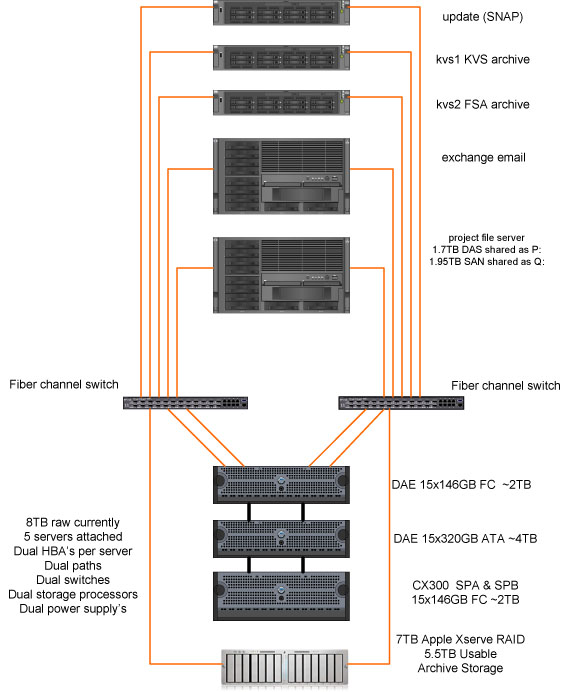
(I'll talk about the apple XServeRAID in a bit)
Seems easy enough but I didn't do it alone. We had the Dell/emc guy with us the whole time. They won't let you perform these task without an engineer onsite. Too easy for something to go wrong.
The benefit of all this is that if my server runs out of space I can easily grow the LUN and manage everything from a single location. Centralized storage is a must in our environment. As much as we want to centralize everything we still can't :/
